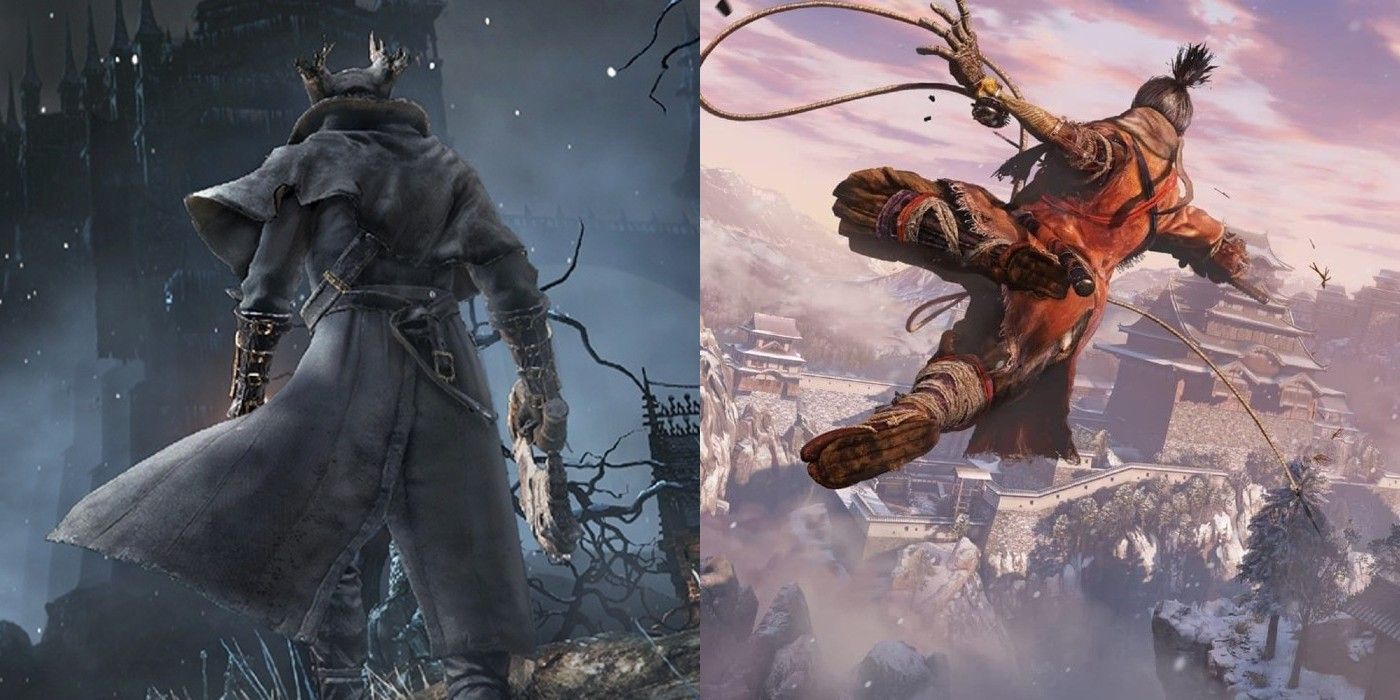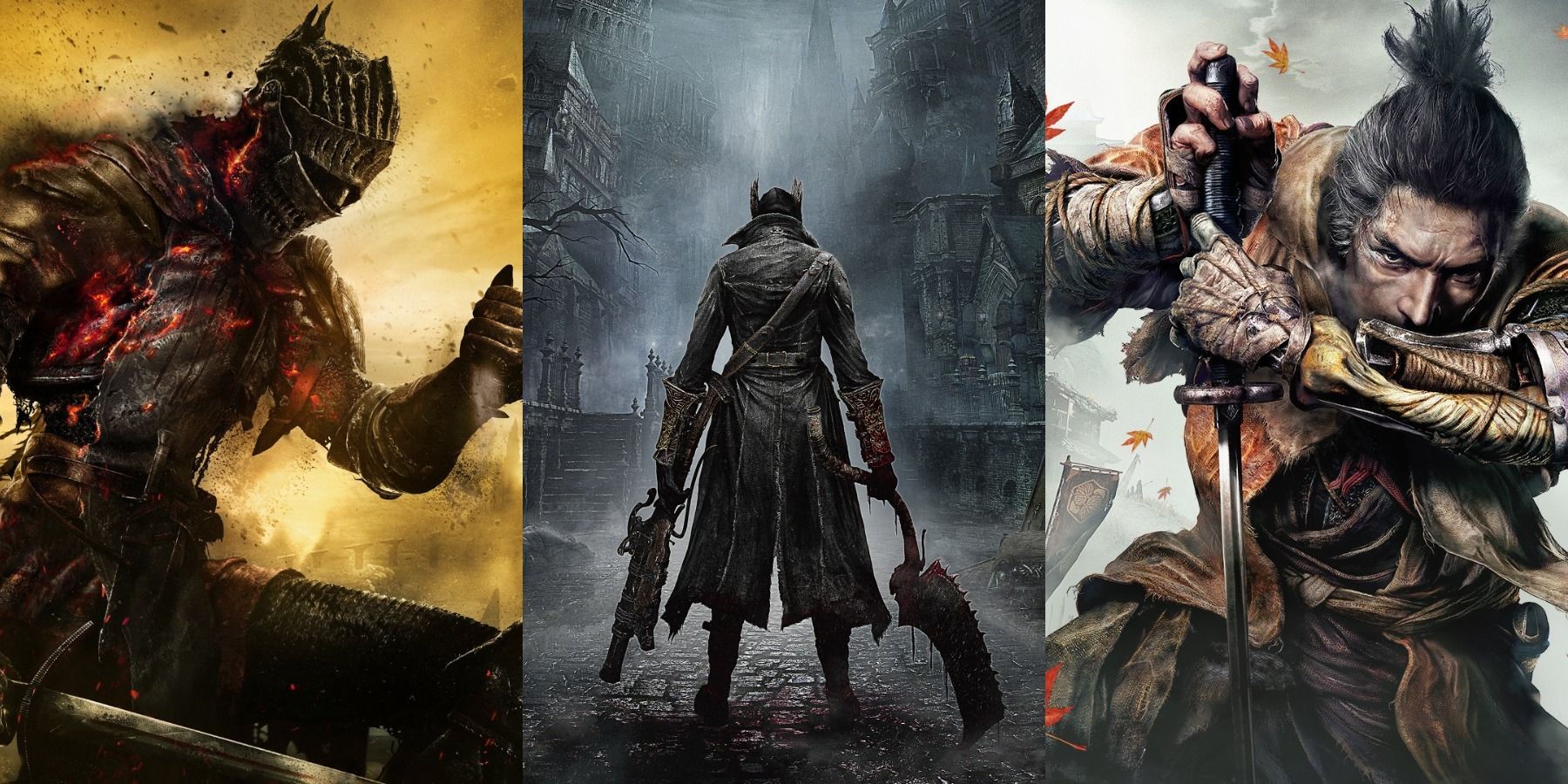
The Dark Souls series helped lay the groundwork for challenging combat in video games, and developer FromSoftware used this to take Bloodborne and Sekiro: Shadows Die Twice beyond the established formula. Amidst the tough boss fights and complex story, Dark Souls received praise for its deep combat systems upon release. Players quickly realized that the game would take a lot more skill than they were used to.
Combat focuses on players creating a certain build in Dark Souls that fit their playstyle, from strength-based knights to characters with powerful magical spells. Considering the gloomy medieval settings of each game, most people employed a sword-and-shield strategy where they would protect themselves through enemy's attacks and strike after the animations were finished. Parrying/riposte systems were included in the game, but they weren't necessary to defeat a majority of the enemies.
Along with the Souls franchise, FromSoftware branched out into other original IPs like Bloodborne and Sekiro. When the games were first released, many believed that both games would just take the combat from Dark Souls and implement them into completely new settings. However, FromSoftware used these games to evolve the Dark Souls experience into new avenues that players hadn't yet seen from the developer.

Bloodborne was the first FromSoftware game to move away from the typical Dark Souls combat systems in favor of something new. Bloodborne centered itself on a faster pace of combat than the Souls game, with enemies constantly moving and attacking more aggressively. Instead of being able to block attacks with a shield, FromSoftware placed a greater emphasis on making players dodge and parry with the gun to adapt to the speed of the game. The developer even poked fun at players who relied on shields in Dark Souls by including a wooden shield that does not protect players very much against enemy attacks. Players were rewarded for using the dodge/gun parry mechanics, with effective parries opening up Visceral attacks that dealt big damage and well-timed dodges opening up windows of attack against Bloodborne's difficult bosses.
Sekiro: Shadows Die Twice evolved even further away from the Dark Souls formula by involving multiple forms of dodging and a combat system heavily focused on parrying attacks. FromSoftware implemented jumping for the first time, as well as allowing for vertical movement using Sekiro's grappling hook that helped players escape from basic and Perilous enemy attacks. Combat was solely focused around the sword, with players having to perfectly time parries to deal damage to an enemy's Posture. Deflecting enemy attacks too often depleted the player's own Posture bar, opening them up to devastating attacks if they relied on the mechanic too much. This created a necessity for Sekiro players to analyze enemy attack patterns and implement the dodging and parrying systems effectively to succeed in combat.
Ultimately, changing up the way Bloodborne and Sekiro played was a beneficial move for FromSoftware. It kept the games from feeling like direct clones of the Dark Souls series and forced players to move away from their normal playstyles and learn how each game wanted them to approach combat. These changes didn't even lower the difficulty of the games either, with both games deserving consideration for being even harder than Dark Souls. It's too early to tell if Elden Ring will continue the evolution outside of Dark Souls, but it will be interesting to see what FromSoftware delivers.
from ScreenRant - Feed https://ift.tt/3iVeVLG


0 Comments